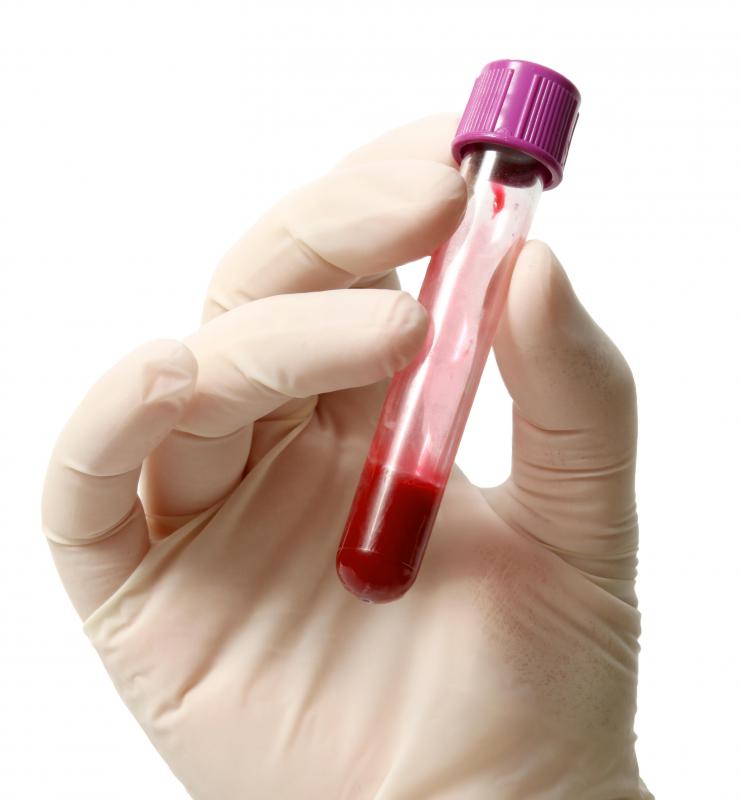At WiseGEEK, we're committed to delivering accurate, trustworthy information. Our expert-authored content is rigorously fact-checked and sourced from credible authorities. Discover how we uphold the highest standards in providing you with reliable knowledge.
How Do I Get a Lipid Profile?
Lipids are fats that occur in the bloodstream, and a measurement of these fats helps to alert people to the possibility of plaque buildup in arteries and risk level for heart disease. A lipid profile is a blood test that measures the different kinds of cholesterol found in the blood, as well as triglycerides. This test can be obtained from a physician or purchased directly from a laboratory.
The lipid profile provides information on total blood cholesterol, the amount of low density lipoprotein cholesterol (LDL) in the blood and the amount of high density lipoprotein cholesterol (HDL) that is in the blood. It also measures the level of triglycerides, which represents stores of fat in the blood. The results are given as numbers that are then compared with the range of normal numbers. The test is performed on a blood sample that is drawn after 12 hours of fasting.

High LDL cholesterol numbers in the lipid profile indicate the presence of large amounts of cholesterol in the blood of the type that can cause atherosclerosis. Plaque builds up in the arteries, narrowing them and causing restricted blood flow. People with high LDL numbers are generally considered to be at high risk for heart attacks. LDL numbers should be as low as possible in the lipid profile, showing that there is a small amount of artery-damaging plaque circulating in the bloodstream.
The HDL number in the lipid profile, on the other hand, should be as high as possible. This type of cholesterol actually protects the body by removing the LDL cholesterol from the blood stream by bonding to it and helping the liver to flush it out. Higher HDL numbers indicate that a person’s blood has a large quantity of this beneficial type of cholesterol present, reducing that person’s risk of plaque buildup in the arteries and lowering the risk of a heart attack.
The other number commonly revealed by a lipid profile is the amount of triglycerides in a person’s bloodstream. Triglycerides are important because they represent the types of fats that are stored to provide energy reserves and to protect the internal organs with a cushioning layer of fat. Despite the fact that triglycerides are beneficial in limited quantities, too high of a level is a risk factor for heart attacks.
Most people get a lipid profile done as part of an annual physical, or more often if a doctor considers the person to be at high risk for a heart attack. Anyone who wants to know his or her cholesterol numbers can also get an independent lipid profile done through a laboratory that deals with individuals as well as physicians. Each laboratory has its own methods for obtaining the blood sample and providing the results, so anyone considering a private test should check with the laboratory for details.
AS FEATURED ON:
AS FEATURED ON:











Discuss this Article
Post your comments